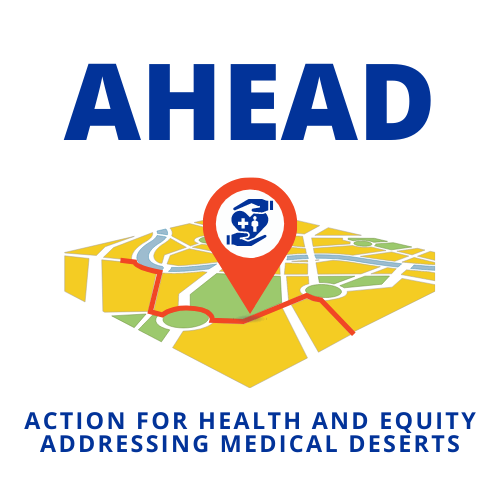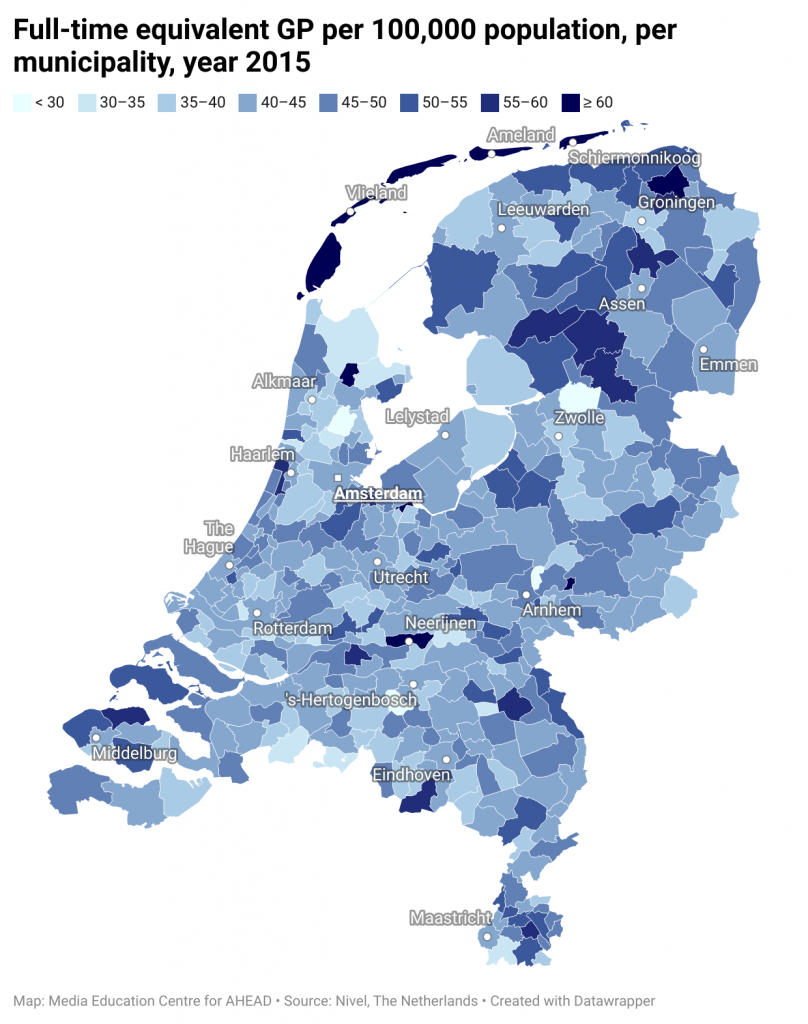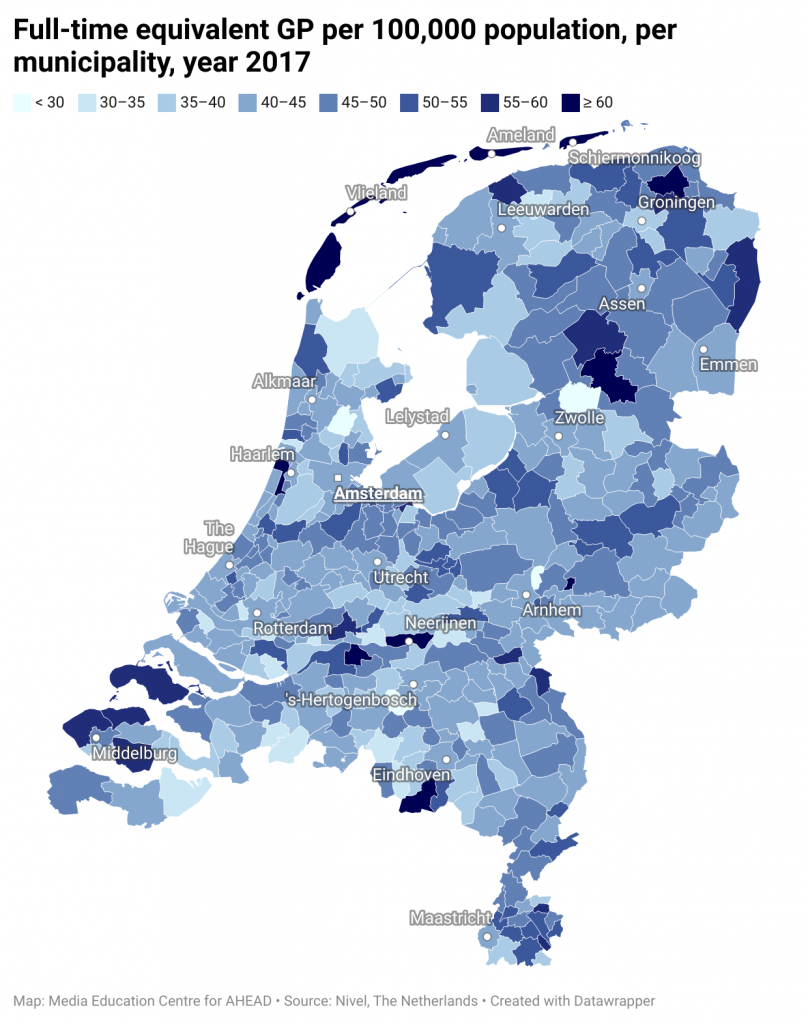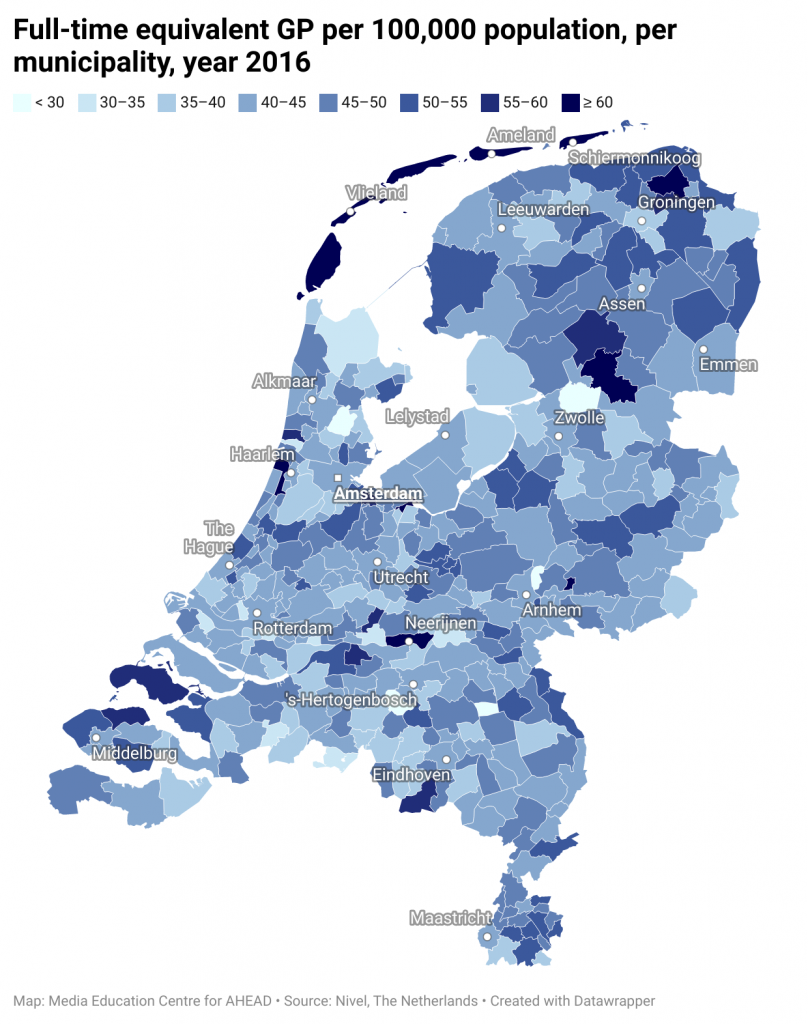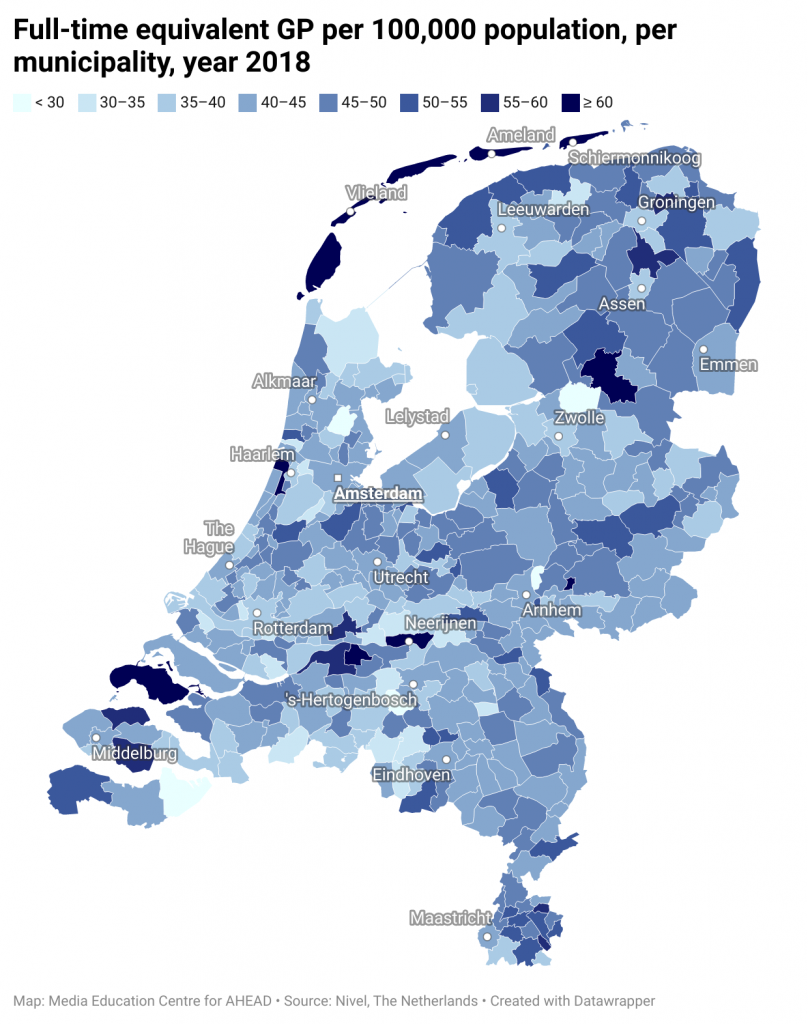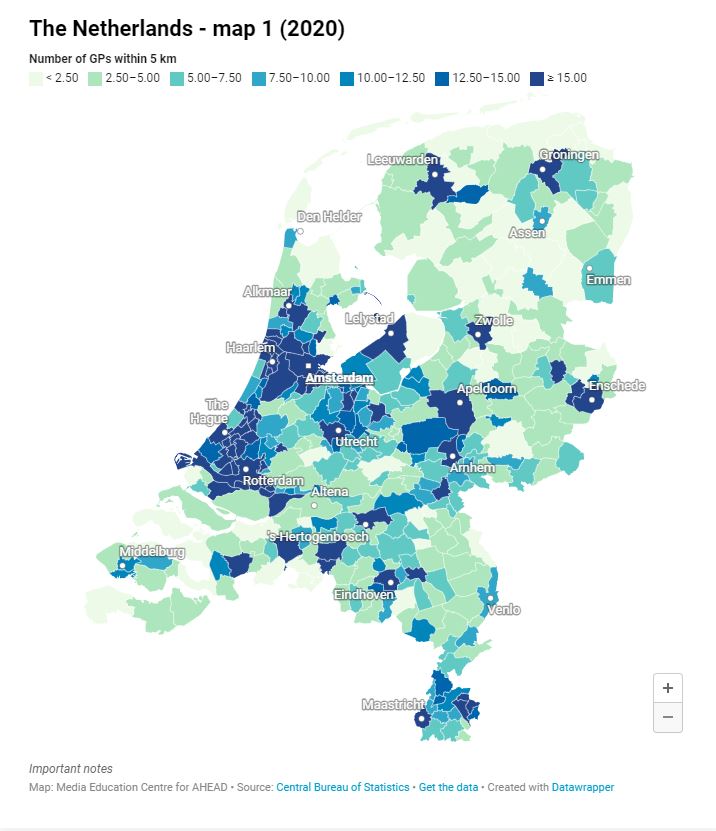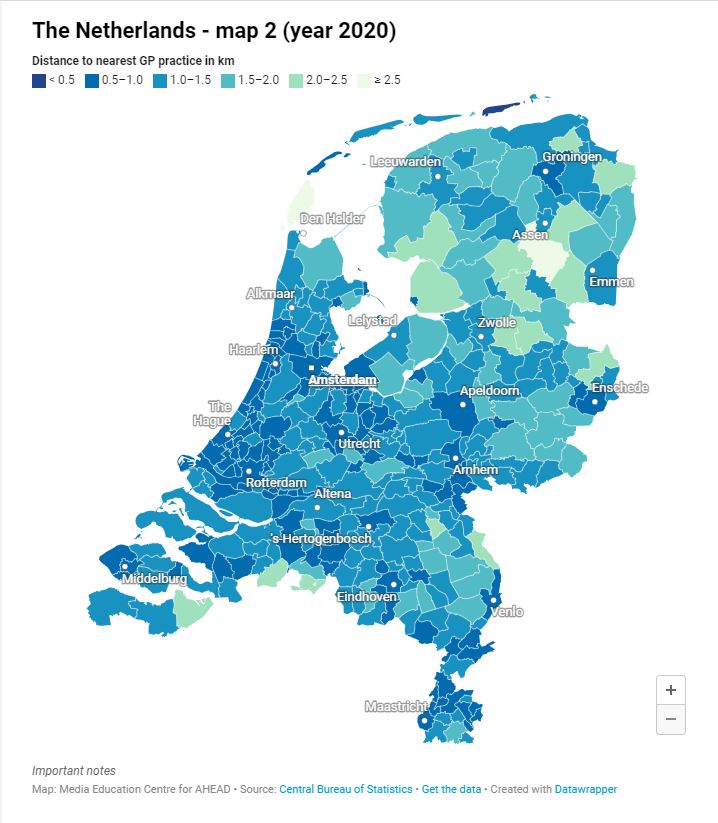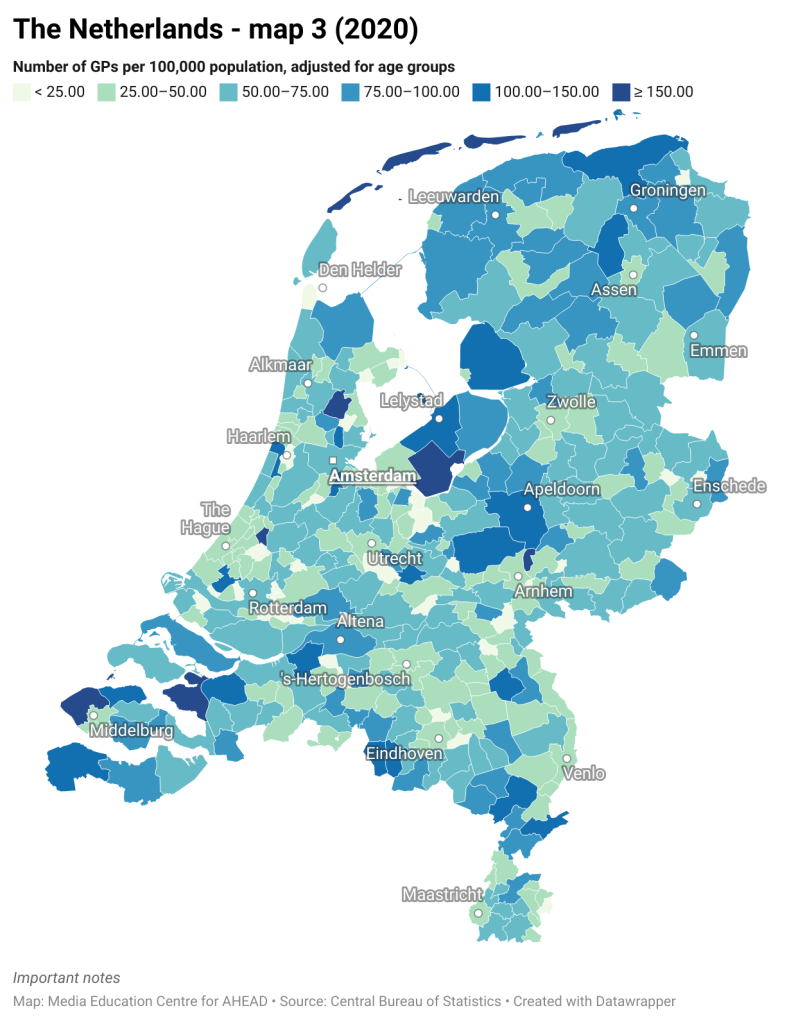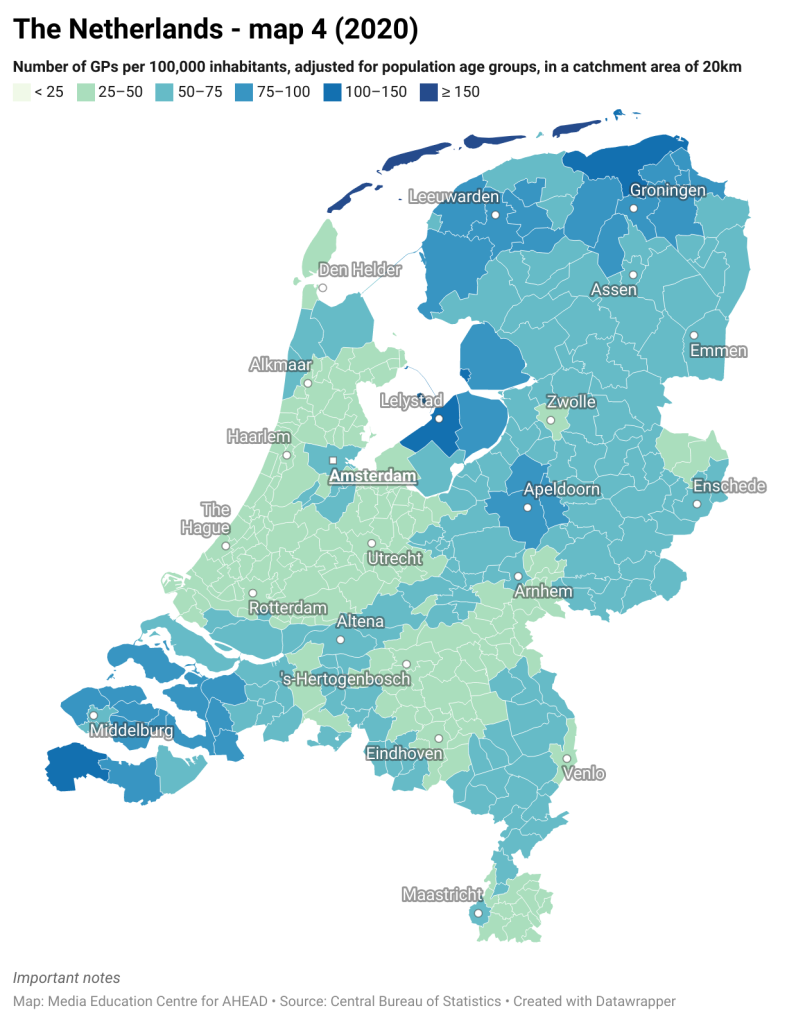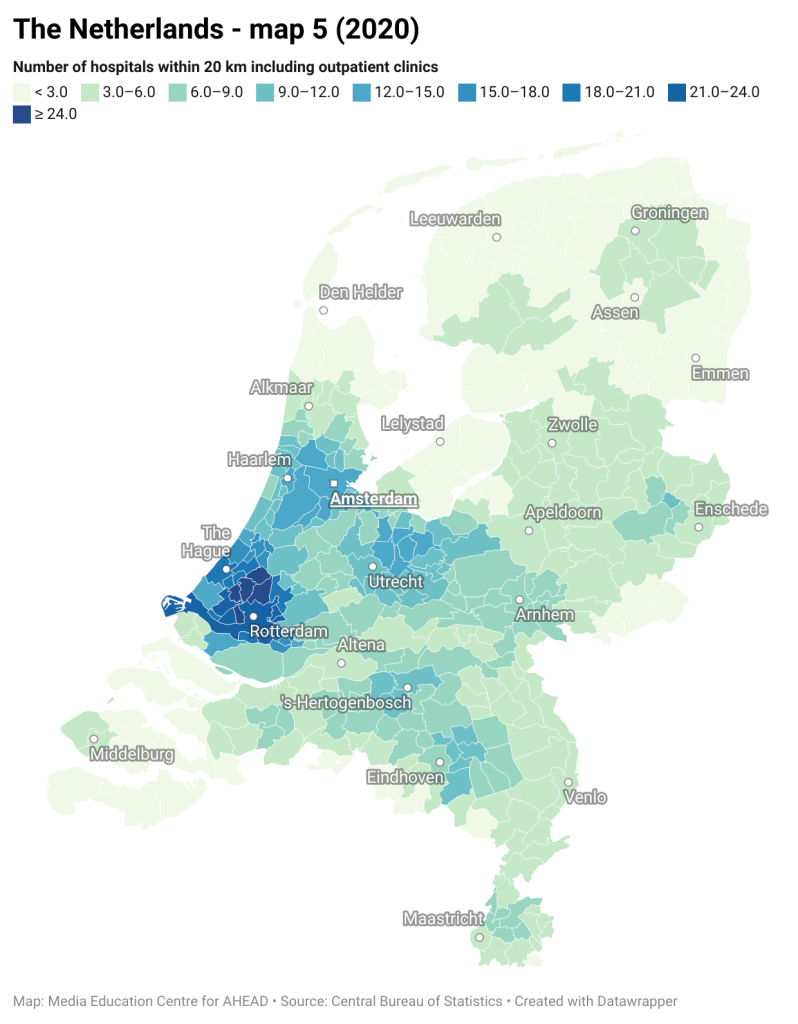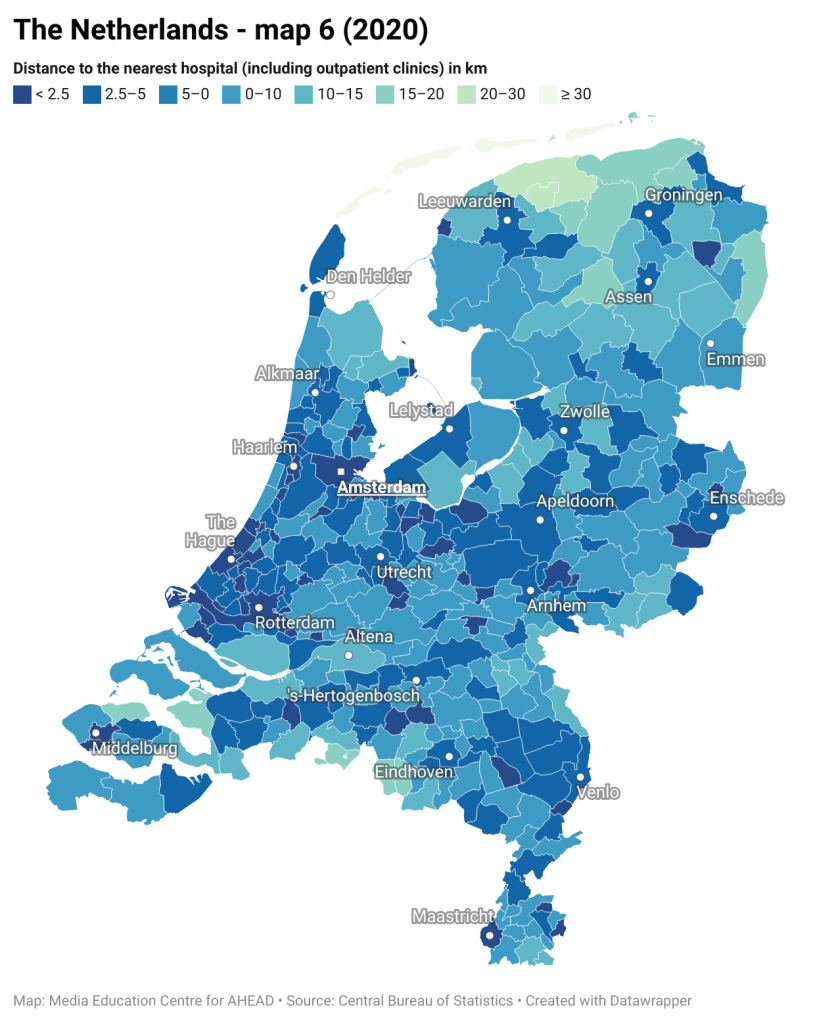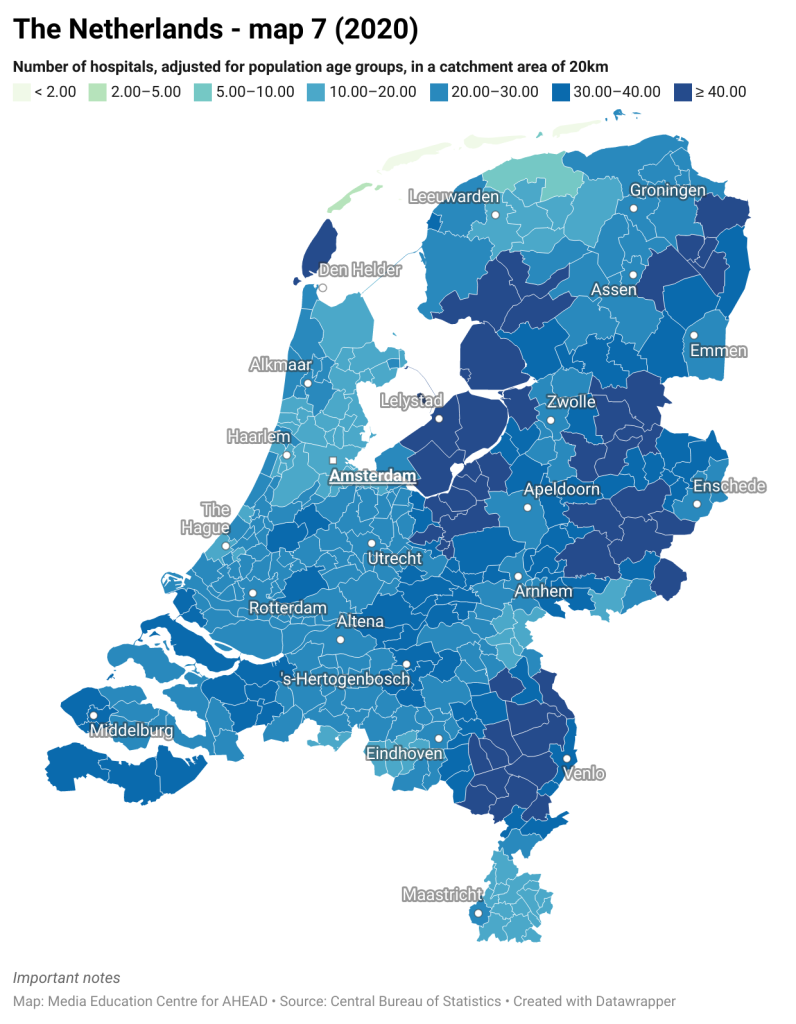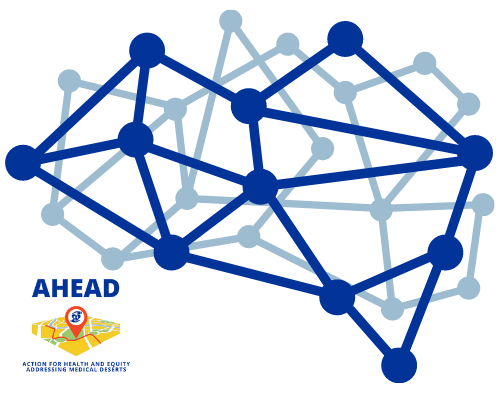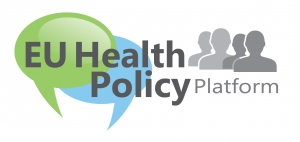The Netherlands – Map 5, year 2020
This is a map of the Netherlands showing the number of hospitals (including outpatient clinics) within a distance of 20 km. Colour-coded from light blue (less than 3) to dark blue (more than 24).
This indicator shows the number of hospitals (including outpatient clinics) within a distance of 20 km. This could be one of the indicators that will be part of an index for medical desertification. This index will be formulated and tested throughout AHEAD’s research activities, between October 2021 – May 2022. Eventually, a mouse-over or clicking on a municipality will also present additional information about that municipality, for example, the size of the population, its demographical composition or the percentage of unmet healthcare needs. Also, information from our in-country research will be included as we go along.
